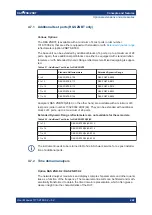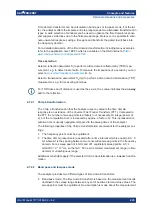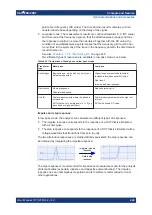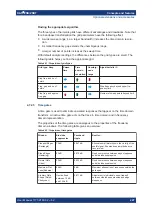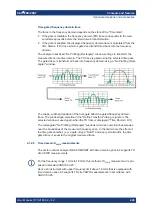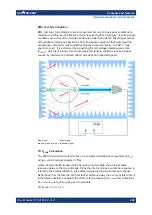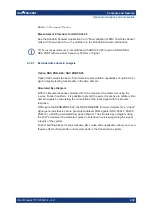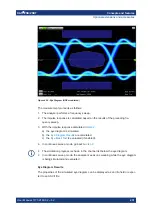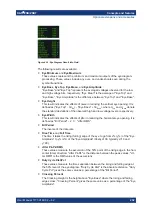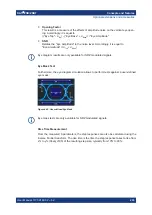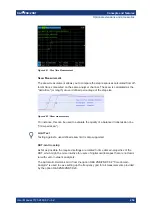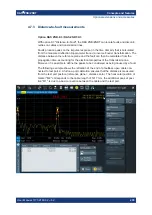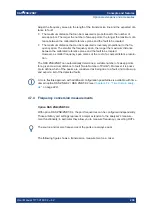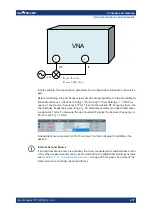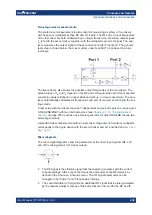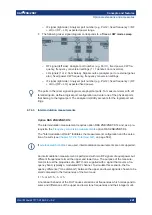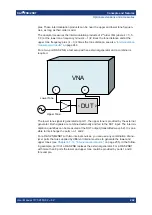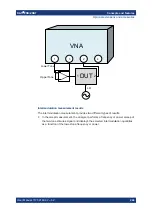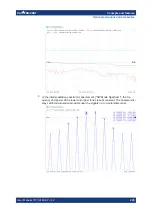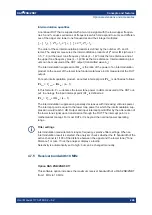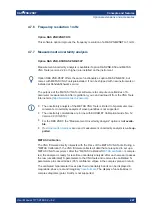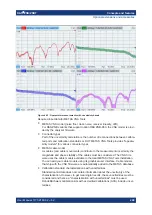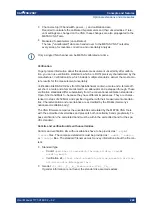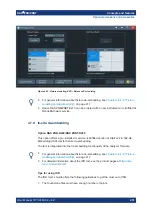
Concepts and features
R&S
®
ZNB/ZNBT
236
User Manual 1173.9163.02 ─ 62
Adjust the frequency sweep to the length of the transmission line and the expected dis-
tance to fault:
●
The maximum distance that can be measured is proportional to the number of
sweep points. The larger the number of sweep points, the longer the maximum dis-
tance between the calibrated reference plane and the fault to be located.
●
The maximum distance that can be measured is inversely proportional to the fre-
quency span. The smaller the frequency span, the longer the maximum distance
between the calibrated reference plane and the fault to be located.
However, a smaller frequency span comes at the cost of a coarser distance resolu-
tion.
The R&S
ZNB/ZNBT can automatically determine a suitable number of sweep points
for a given maximum distance to fault ("Auto Number of Points"). Moreover it is possi-
ble to define which of the peaks are considered as being due to a fault, and to draw up
and export a list of the detected faults.
A more flexible approach with additional configuration possibilities is available with time
domain option R&S
ZNB-K2 / R&S
ZNBT-K2 (see
Chapter 4.7.2, "Time domain analy-
4.7.4
Frequency conversion measurements
Option R&S
ZNB/ZNBT-K4
With option R&S
ZNB/ZNBT-K4, the port frequencies can be configured independently.
Those arbitrary port settings represent a major extension to the analyzer's measure-
ment functionality; in particular they allow you to measure frequency-converting DUTs.
The source and receive frequencies of the ports are always equal.
The following figure shows a transmission measurement on a mixer.
Optional extensions and accessories

